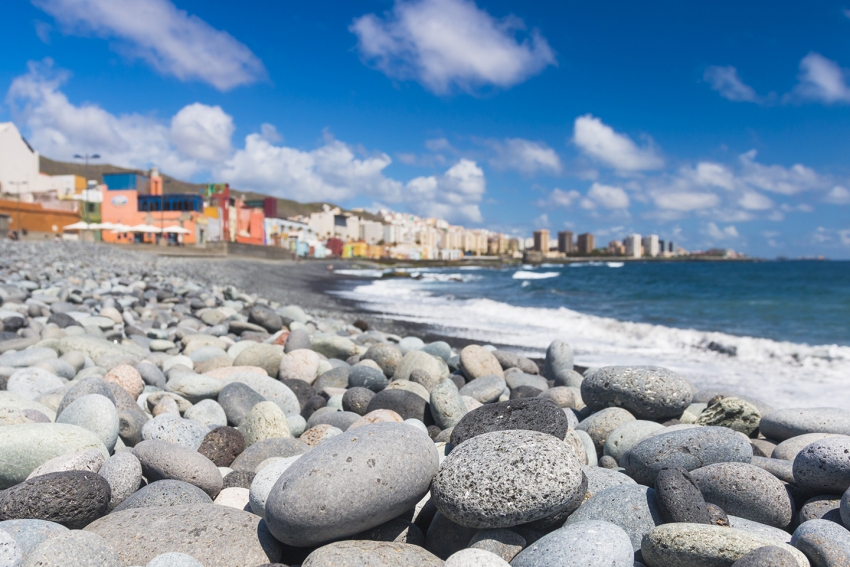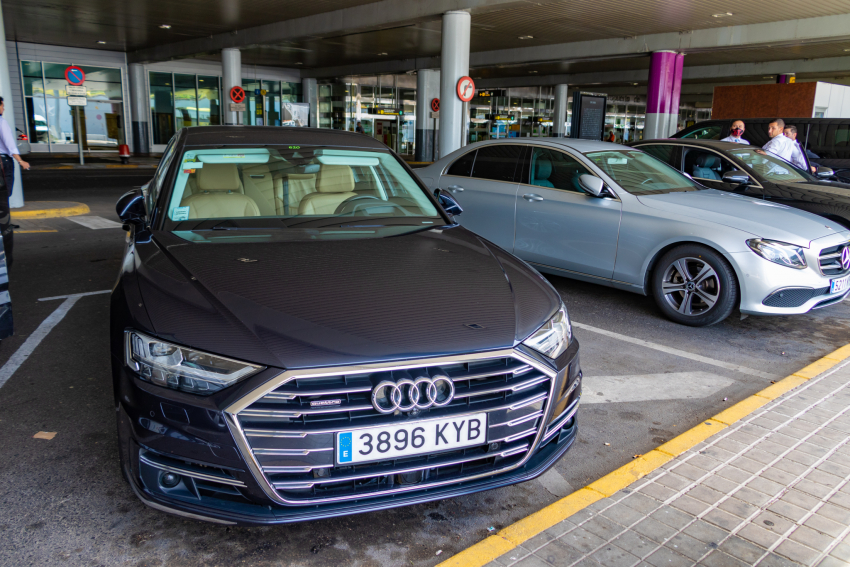Here're ten great reasons to stop at San Cristobal when you visit Las Palmas.
Alex says: San Cristobal natives have been called Chacalotes since a giant sperm whale (a chacalote) washed up in the 1930s.
Village in a city
San Cristobal was originally a separate fishing village south of Las Palmas but the growing city absorbed it years ago. No matter: It still has its own identity and village feel. This is partly because it's cut off from the rest of Las Palmas by the main road, but also because chacalotes have always looked towards the ocean rather than the urban. Today, along with isolated Las Coloradas in La Isleta, it's the only bit of Las Palmas that still has a pueblo marinero feel.
Seafood restaurants
San Cristobal is home to the city's artisanal fishing collective and is one of the few places in Gran Canaria where fish goes straight from boat to kitchen. Restaurants here serve up no-nonsense fried and grilled fish, seafood and Canarian staples. The prices are fantastic and it's a rare luxury to eat by the sea within sight of the boats that caught your lunch. Los Botes at the south end of the promenade is the most famous but all the restaurants in town know how to cook a fish.
The sandy beach
South-facing La Puntilla beach is a scrap of sand by the harbour but the locals love it and so will you. It's sheltered and during the week you're almost guaranteed to be the only non-chacalote on the sand. At weekends, it fills up with locals and post-seafood binge visitors. Too small for facilities, La Puntilla does get a visit from the ice cream man on weekend afternoons.
The pebbly beach
West-facing, pebbly San Cristobal beach is a different animal altogether. On calm days, you can swim off the north end in a shallow bay sheltered by the offshore fort but on rough days this beach does its best to invade the village. Big waves chuck tonnes of pebbles over the seawall and onto the promenade and the restaurants terraces. It's rare to visit San Cristobal and not see the damage from the last storm.
Don't swim off San Cristobal beach in the winter or at high tide. In fact, if you want to swim, go round the corner to La Puntilla beach instead. The last thing the locals want is to have to fish you out of the water during siesta time.
Promenade
Las Palmas isn't short of seafront promenades. You can now walk from El Confital beach right at the north end of the city all the way along Las Canteras beach and out to the Mirador de Atlante sculpture (great restaurant next to it BTW) and all the way from Alcaravanres beach south, past San Cristobal, to La Laja beach. However, San Cristobal has its own seafront promenade that's perfect for walking off a seafood feast. It runs north to south all the way from the harbour to the San Cristobal fort at the north end of the village.
The walk takes you past almost every house in town (San Cristobal is only one house thick at the north end) and you often walk past chacalotes grilling sardines and singing on the promenade.
The San Cristobal promenade connects up to the main one running down the east side of the city at the north end of the village.
Seafood festival
San Cristobal's Sabor a Mar seafood festival is a growing Las Palmas event. The village's restaurants put up tapas stands and each serve a different seafood tapa. There's live music in the square, regattas offshore and plenty of activities for the kids. Arrive early (before 1 pm) for easy parking and first pick of the tapas.
Dates vary but the 2015 Sabor a Mar festival is on the 18 and 19 April and this year's star ingredient is the sardine. San Cristobal often holds a second festival in June with more seafood and demonstrations of traditional fishing techniques. We'll update when we know dates.
Castle
The Castillo de San Cristobal or Torre de San Pedro is more of a stone fort than a castle, but it played a vital role in the early history of the city. Built in 1578 it survived an attack by Sir Francis Drake in 1595 and was taken by Dutch admiral Van Der Does in the 1599. Since then it's only had to fight off the vicious winter storms and nobody quite knows how it's still standing.
For a close look at the fort, walk across the rocks at low tide but be careful if there's any sign of weather. You can't get inside, but that was the whole point of the Castillo in the first place.
Lex says: Landscape photographers hang around San Cristobal at dawn in search of the perfect Castillo photo.
Fishmongers
Las Palmas' artisanal fishing guild is based in San Cristobal and the village's fishmonger sells their catch as soon as it's unloaded from the boats. Las Palmas' best restaurants buy their fish here and if they don't mind washing the seaweed off afterwards, then nor should you. Look out for fresh red mullet (salmonetes), pink bream (brecas) and mackerel, sardines and tuna (depending on what's swimming past at the time).
The fishmonger is on palm-lined Calle Popa at the south end of the village.
For more info on local fish, see our seafood glossary.
Las Palmas view
Look north from San Cristobal promenade and you see Las Palmas's west side curving across the horizon. Offshore there's container ships and an oil rig or two waiting to head into the giant Muelle de la Luz port. On a sunny day, it's a spectacular view (see main photo).
Alex says: The oil rigs are here for refitting rather than drilling: So far nobody has found oil in Canarian waters.
Because nobody else does
Tourists in San Cristobal are rarer than hen's teeth and the village is bereft of souvenir shops, touts and neon lights. It's Gran Canaria as it has always been and that makes it special. If you want to get to know the island, then places like this are a good place to start.














